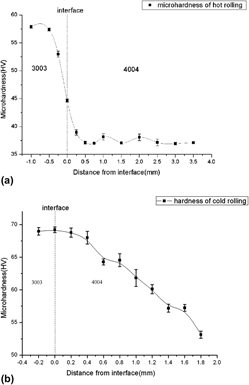Crossref Citations
This article has been cited by the following publications. This list is generated based on data provided by
Crossref.
Zhou, Yinghui
Liu, Yongchang
Zhou, Xiaosheng
Liu, Chenxi
Yu, Liming
Li, Chong
and
Ning, Baoqun
2015.
Processing maps and microstructural evolution of the type 347H austenitic heat-resistant stainless steel.
Journal of Materials Research,
Vol. 30,
Issue. 13,
p.
2090.
Wang, Yu
and
Vecchio, Kenneth S.
2015.
Microstructure evolution in a martensitic 430 stainless steel–Al metallic–intermetallic laminate (MIL) composite.
Materials Science and Engineering: A,
Vol. 643,
Issue. ,
p.
72.
Wang, Yu
and
Vecchio, Kenneth S.
2016.
Microstructure evolution in Fe-based-aluminide metallic–intermetallic laminate (MIL) composites.
Materials Science and Engineering: A,
Vol. 649,
Issue. ,
p.
325.
Wang, Yu
Zhou, Shenggao
and
Vecchio, Kenneth S.
2016.
Annealing effects on the microstructure and properties of an Fe-based Metallic-Intermetallic Laminate (MIL) composite.
Materials Science and Engineering: A,
Vol. 665,
Issue. ,
p.
47.
Wang, Yu
Wang, Haoren
Liu, Xin
and
Vecchio, Kenneth S.
2017.
Microstructure evolution in pure Ni and Invar-based Metallic-Intermetallic Laminate (MIL) composites.
Materials Science and Engineering: A,
Vol. 682,
Issue. ,
p.
454.
Wang, Yu
Wang, Haoren
Liu, Xin
and
Vecchio, Kenneth S.
2017.
Microstructure evolution in Ni and Ni-superalloy based metallic-intermetallic laminate (MIL) composites.
Intermetallics,
Vol. 87,
Issue. ,
p.
70.
Zhou, Shenggao
Wang, Yu
Yue, Xingye
and
Wang, Cheng
2018.
A second order numerical scheme for the annealing of metal–intermetallic laminate composite: A ternary reaction system.
Journal of Computational Physics,
Vol. 374,
Issue. ,
p.
1044.
Lu, Zichuan
Jiang, Fengchun
Chang, Yunpeng
Niu, Zhongyi
Wang, Zhenqiang
and
Guo, Chunhuan
2018.
Interfacial microstructure characterization and mechanical behavior of NiTi fiber reinforced Al 3 Ti composite.
Materials & Design,
Vol. 143,
Issue. ,
p.
274.
Agarwal, Mayank
Shukla, Jitesh
Shukla, Ajit Kumar N.
and
Srivastava, Rajeev
2020.
Microstructural evaluation of Al6061-SS316L cast composite reinforced by Ball-milled Al/Powder-SS316L/chip.
Materials Today: Proceedings,
Vol. 26,
Issue. ,
p.
556.
Wang, Yu
Pan, Hongyang
and
Wang, Haoren
2022.
Fabrication and microstructure evolution of B2 structure-based metal-intermetallic-laminate composites.
Journal of Alloys and Compounds,
Vol. 892,
Issue. ,
p.
162073.
